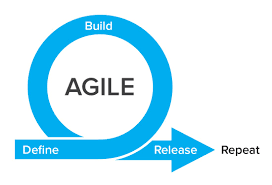
The bad guys have long benefited from vulnerabilities in any part of an OS or application. Now they’re going a bit deeper and looking for ways to benefit from development cycles.
With the advent of the digital transformation, many organizations that create software are in a state of continuous development to allow for rapid adoption of their latest technology. Remaining in a constant state of creating and deploying new versions of software – as frequently as every few weeks – can raise security concerns, especially for software that interacts with critical company information.
With the focus being on frequent releases, software vendors may lack the proper security testing and validation of each release to ensure no vulnerabilities are created. And, today’s cybercriminals are counting on it. With such small windows of opportunity, malware is being programmed to monitor and target specific potential vulnerabilities.
Equally, cybercriminal organizations are utilizing agile development themselves as a means of adapting to the latest measures put in place by security vendors. In many cases, exploits, tools, and delivery mechanisms are being developed separately to make “custom” malware available to far less sophisticated attackers via the darkweb.
To stop attacks from being successful, who’s responsible?
It’s likely not the software vendors – they’re already working diligently to improve the security of their products and services. So, the most effective means of stopping attacks is within your organization. There are a few things you can do:
- Use identity-based security – And not just MFA. If you’re serious about security, look for ways to implement identity where every last aspect of a request by a user is scrutinized; from the device used, to the time of day, and beyond.
- Make it dynamic – Don’t rely on static rules; we’re not talking about opening and closing ports. Your security approach needs to be one that is constantly identifying and measuring risk.
- Don’t just focus on technology – your users need their security leveled-up as well; consider Security Awareness Training as a means to keep users up-to-date on the latest attack methods, scams, and best practices to ensure they don’t become the victim that opens the door to an organization-wide attack.
On-Demand Webinar: Your Organization Through the Eyes of an Attacker
 Attackers follow a number of paths as they search for entry-points into your organization. Join Perry Carpenter, Chief Evangelist and Strategy Officer at KnowBe4 and former Gartner Research Analyst, in this practical session providing a high-level overview of the theory/practices used, showing you how to simulate those same tactics using both free and subscription-based aspects of KnowBe4's platform.
Attackers follow a number of paths as they search for entry-points into your organization. Join Perry Carpenter, Chief Evangelist and Strategy Officer at KnowBe4 and former Gartner Research Analyst, in this practical session providing a high-level overview of the theory/practices used, showing you how to simulate those same tactics using both free and subscription-based aspects of KnowBe4's platform.
PS: Don't like to click on redirected buttons? Cut & Paste this link in your browser:
https://info.knowbe4.com/webinar-your-organization-through-the-eyes-of-an-attacker





